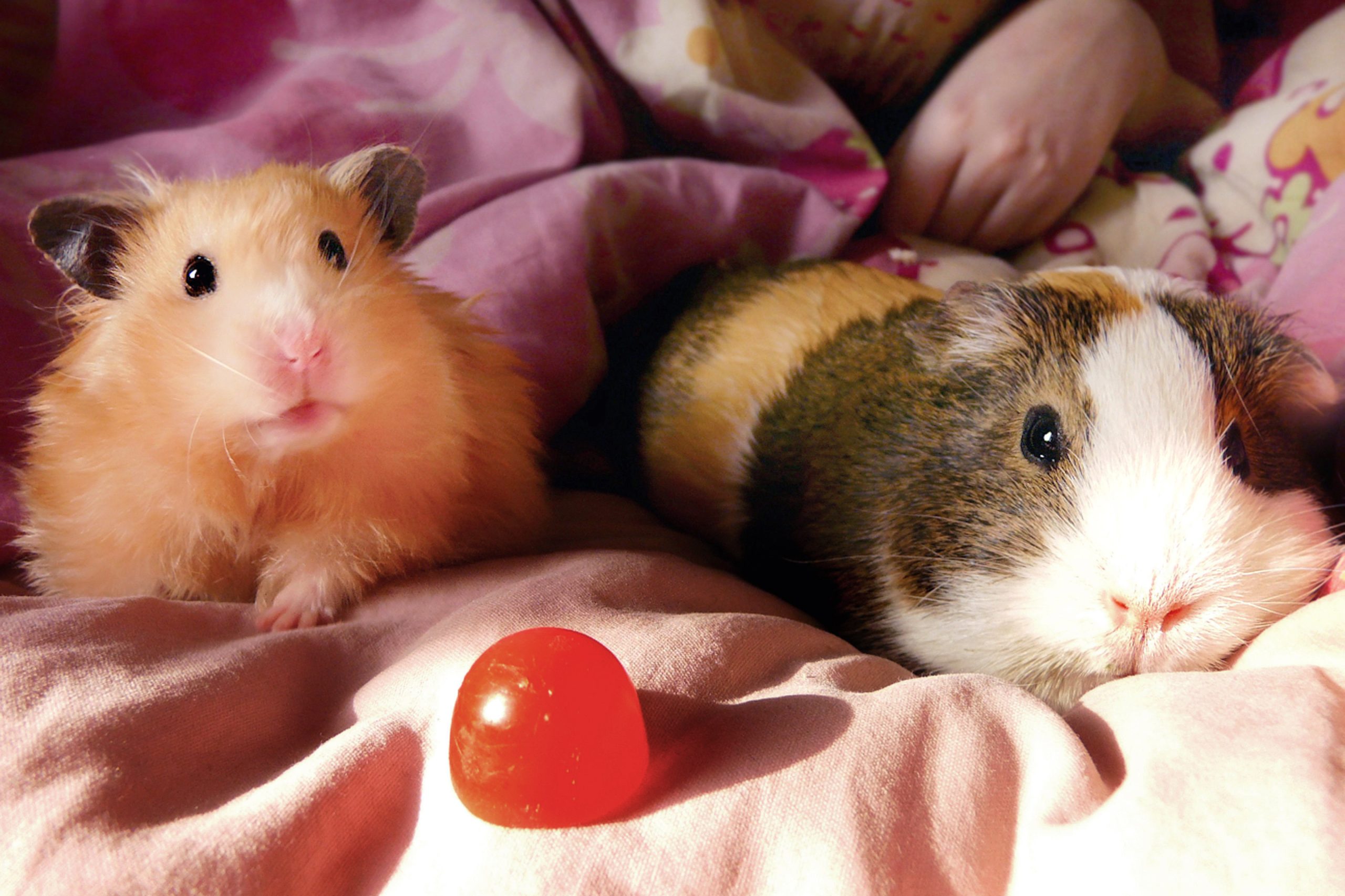Choosing a small pet to welcome into your home is an exciting endeavor, and two popular options that often top the list are hamsters and guinea pigs. While they share certain similarities, these furry companions have distinct characteristics and care requirements. In this comprehensive guide, we’ll explore the differences between hamsters and guinea pigs, aiding prospective pet owners in making an informed decision that aligns with their lifestyle and preferences.
Physical Characteristics
Size: One of the most noticeable differences between hamsters and guinea pigs is their size. Hamsters are generally smaller, ranging from 2 to 6 inches in length depending on the species. Guinea pigs, on the other hand, are larger, with adults typically measuring between 8 to 12 inches and weighing around 2 to 3 pounds.
Body Shape: Hamsters typically have a more compact and streamlined body shape. Guinea pigs, in contrast, have a robust and stocky build with a distinctively broader midsection.
Ears and Tail: Hamsters have small, rounded ears and very short tails, sometimes barely visible. Guinea pigs, in contrast, have large, protruding ears and no tails.
Behavioral Differences
Social Nature: Guinea pigs are known for their social and herd-oriented nature. They thrive in the company of other guinea pigs and often develop strong bonds with their cage mates. Hamsters, on the other hand, are generally more solitary and territorial, with a tendency to be aggressive towards other hamsters if housed together.
Activity Level: Hamsters are nocturnal creatures, meaning they are most active during the night. They spend a significant portion of their day sleeping and may not be as interactive during daylight hours. Guinea pigs, in contrast, are diurnal, meaning they are awake and active during the day. They enjoy social interaction and may be more engaged when their human companions are around.
Handling and Temperament: Hamsters are often more independent and may take some time to become accustomed to handling. Some hamsters may be prone to biting when they feel threatened. Guinea pigs, on the other hand, are generally docile and gentle, making them more suitable for families, including children. They often enjoy being held and petted, especially if they are used to regular handling.

Dietary Distinctions
Dietary Requirements: Both hamsters and guinea pigs have specific dietary needs. Hamsters are omnivores and require a diet that includes a mix of commercial hamster food, fresh fruits, and vegetables. Guinea pigs, on the other hand, are herbivores and need a diet rich in hay, fresh vegetables, and vitamin C. Unlike hamsters, guinea pigs cannot produce their own vitamin C and must obtain it from their diet.
Feeding Behavior: Hamsters are known for storing food in their cheek pouches and then transporting it to their nesting area. They may also bury food for later consumption. Guinea pigs, on the other hand, do not have cheek pouches and consume food directly from their dish. They have a continuous need for hay to support their digestive health.
Habitat and Housing
Cage Size: Due to their size, hamsters require a relatively small cage with appropriate bedding for burrowing. Wire cages with narrow spacing between bars are suitable for hamsters. Guinea pigs, being larger and more social, need a more spacious habitat. Cages with solid bottoms and ample space for them to move, play, and exercise are essential. Guinea pigs also benefit from the company of at least one same-sex cage mate.
Bedding and Nesting: Hamsters enjoy creating burrows in soft bedding materials such as paper or aspen shavings. Guinea pigs, on the other hand, prefer hay as both bedding and a food source. Additionally, guinea pigs appreciate having hiding spots and shelters in their habitat.
Health Considerations
Lifespan: Hamsters generally have a shorter lifespan compared to guinea pigs. Depending on the species, hamsters typically live between 2 to 3 years. Guinea pigs, with proper care, can live anywhere from 5 to 8 years.
Health Concerns: Hamsters are prone to specific health issues such as dental problems, respiratory infections, and obesity. Guinea pigs, while hardy, can be susceptible to conditions like scurvy (vitamin C deficiency), respiratory infections, and dental issues. Regular veterinary check-ups are crucial for both species to ensure early detection and treatment of potential health issues.
In the realm of small pets, hamsters and guinea pigs each bring unique qualities to the table. Hamsters are ideal for those seeking a more independent and nocturnal companion, while guinea pigs offer a social and diurnal option that thrives on interaction. Understanding the differences in size, behavior, dietary needs, and housing requirements is essential for providing the best care for these charming creatures.
